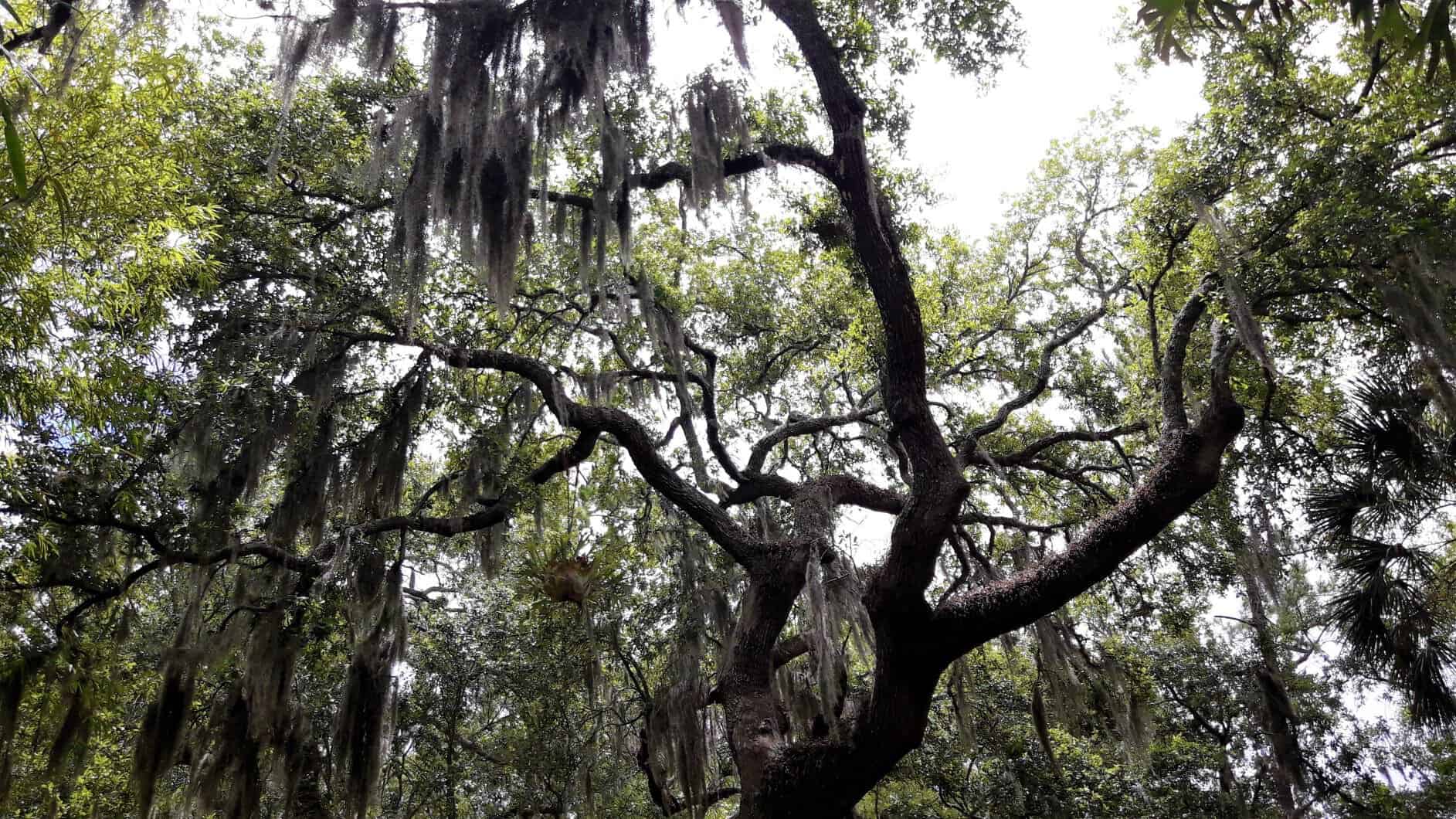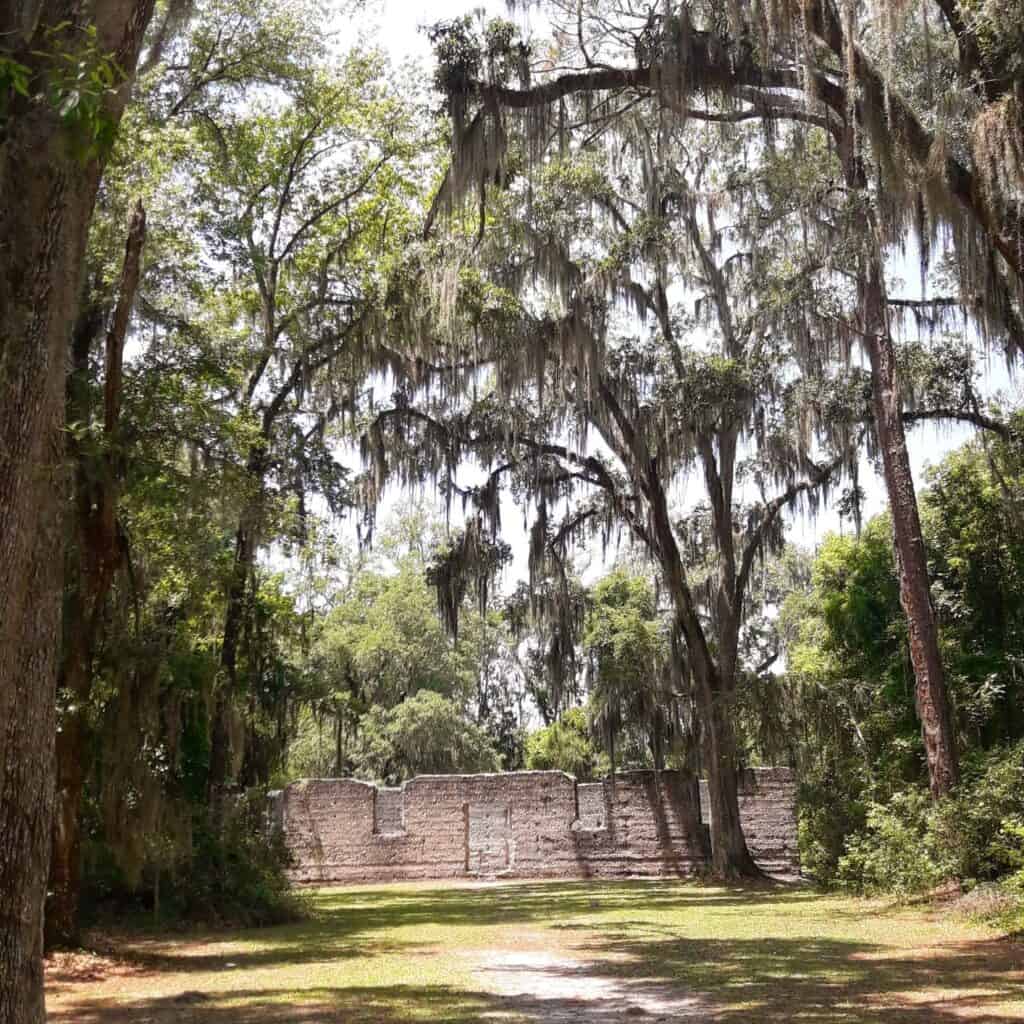Spanish Moss: Bling of the Live Oak Tree

You’ll never guess which fruit Spanish moss is related to. But you can find out below!
Maybe you do not like the look of Spanish moss, but I love it. I love how gracefully it hangs from its perch in the trees and how its blueish-gray garlands gently flutter in the breeze like elegant jewelry. I love it because when I see it, it means I am home.
Spanish moss is found in the southern United States, from eastern Virginia south and west to Texas, and in the West Indies and Central and South America. It has stems that grow up to twenty-five feet long with threadlike leaves that are covered with overlapping silver-gray scales, which help it cling to its host tree. Because the moss has no roots, these scales absorb water from the air.
Spanish moss can reproduce in two ways: through seed and by producing pups. Get the image of cuddly puppies out of your head; in this case, pups means small copies of the moss that grow from the original plant. The moss propagates when its seeds, or pups, get caught by the wind and land on new trees.
However, Spanish moss is not Spanish, and it is not a moss. Ready for a new vocabulary word? It is an epiphyte, which means it is a nonparasitic plant that attaches itself to trees for support – mainly live oaks and pines that border estuaries, rivers, swamps, and coastal plains. When the French explored this area in the mid-1500s, they believed this curly gray “moss,” which the Native Americans had named “tree beard,” looked like the long curly beards of the Spanish so they dubbed it “Spanish Beard” as a dig to their enemies. Clearly, the name stuck.

Spanish moss is not just pretty; it is extremely important for supporting wildlife, too. It hosts a wide variety of insects, bats, frogs, lizards, snakes, and more. Some species of birds make their nests within mats of Spanish moss in the spring and summer, and there is one species of spider that lives only in Spanish moss.
It also has long been useful to humans for a variety of purposes. The Seminole Indians dried it to use for – among many other things – fire arrows, and other Native Americans boiled it to make a tea for chills and fever (do you dare try that at home?). The height of commercial Spanish moss harvesting came in the early 1900s when it was used to stuff car seats, furniture, mattresses, and even insulation in homes. Mattresses of Spanish moss were famous for being exceptionally cool. By the 1970s, synthetic fibers made the use of Spanish moss obsolete, but today it is used as fodder for livestock.
You may be wary of touching Spanish moss due to the chiggers it reputedly houses. However, you usually will not find these pesky red bugs in moss that is hanging in trees; normally they shelter only within moss that lies on the ground. However, if you plan to use Spanish moss for any reason, to be safe you should boil it in water or heat it in the microwave or oven. Many campers do this before using the moss as bedding.
So what is your guess on Spanish moss’s fruit cousin? Did you guess pineapple? I never would have guessed it either, but they are both part of the Bromeliaceae family of flowering plants. So next time you eat pineapple, think about its less tasty, more rustic relative. Even better, step outside to enjoy its ethereal beauty first-hand!
Enjoy Spanish moss on tour with us on a Cumberland Island or St. Marys Walking Tour!



2 Comments
Emma · May 28, 2020 at 12:38 pm
Yes!!! Finally a fellow appreciator of one of the South’s most elegant and amazing plants 🙂 This is a much needed article for all those who believe moss is just a parasitic invader of our native trees. Thanks for the informative and enlightening article Molly!
Molly Verlin · May 28, 2020 at 2:07 pm
You’re the expert so I really value your opinion on this. Thanks, Emma!
Comments are closed.